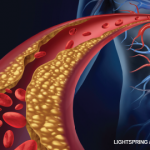Another concern is that “the statement does not take into account the differences between the musculoskeletal conditions for which these agents might be used or the diversity of biological effects of the COX-1– and COX-2–derived prostaglandins that may affect other organ systems,” says Dr. Crofford. “The way the statement was put together from a specific cardiovascular risk-focused perspective did not adequately capture the diversity of conditions [we see] that would need different types of therapy and also the diversity of personal risks seen in our patients.”
Bottom Line: Balance Benefit and Risk
Dr. Crofford suggests that physicians need to realistically evaluate drug risks in the specific patient before them.
“The bottom line is that there has to be a balance in the risk–benefit ratio, the patient has to be informed, and the physician has to be knowledgeable,” she says. “If these criteria are met, I am in favor of giving patients and physicians choices of drugs.”
Kurt Ullman is a freelance writer based in Indiana.
References:
- Antman EM, Bennet JS, Daughtery A, et al. Use of nonsteroidal anti-inflammatory drugs: An update for clinicians: a scientific statement from the American Heart Association. Circulation. 2007;115:1634-1642.
- Callahan LF, Pincus T. Mortality in the rheumatic diseases. Arthritis Care Res. 1995;8:229-241.
Guidelines for the Perplexed, Or how I lost my poetic license but not my medical license
By David Fox, MD
Now, as you know, with the drug hydralazineSome cases of lupus are now and then seen. So should rheumatologists hold a convention To promulgate guidelines about hypertension?
Wait! Before you might answer, consider the statin, That cute little pill that will lower the fat in Your arteries cardiac—yet there’s a fuss all Because this same statin can inflame your muscle!
Would it therefore not be especially sensible, Indeed, one could even suggest, indispensable, To have ACR guidelines on lowering lipid? Or would this sort of venture instead be insipid?
Now here come our friends from American Heart, Eager, as always, to play a big part, In telling us all how we should treat arthritis, Rheumatoid, osteo-, even bursitis.1
Great experts are they as they quickly will tell us, And their wise advice now is designed to propel us To change how we treat the diseases rheumatic, To avoid any more cardiology static.
“It’s RA! Well, goodness, do not use an NSAID, Until you have tried heat and cold—even rest in bed. If you say ‘pretty please’ we’ll allow a naproxen, Even though those who get it might then need digoxin!


